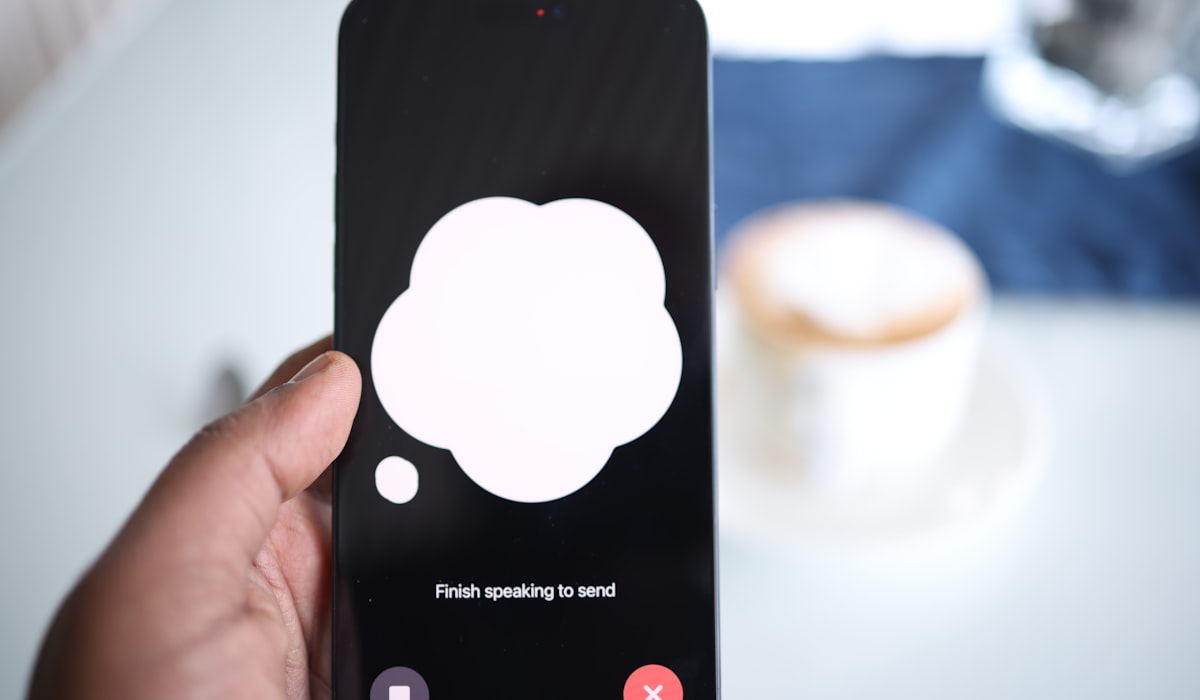Table of Contents
- Introduction
- The Role of AI in Content Creation for HR
- Utilizing AI-Powered Content Tools and Platforms
- How AI Tools Create Writing for Job Descriptions
- AI in Employee Communications: Enhance Clarity and Efficiency
- Personalized Training Materials: A New Era of AI-Driven Learning
- The Impact of AI on Content Marketing and Employee Engagement
- Balancing Human Keyword Generation and AI-Generated Content
- Implementing AI in HR: Key Takeaways and Best Practices
- Conclusion
- Frequently Asked Questions
Introduction
Imagine a world where writing job descriptions takes minutes instead of days, employee communications are seamless, and training programs are tailored to individual needs—all thanks to artificial intelligence. This isn’t a futuristic fantasy; it’s happening right now! Businesses around the globe are leveraging AI to transform their HR departments in ways you wouldn’t believe.
From automating repetitive tasks to delivering personalized training experiences, AI is a game-changer that is making HR more efficient and impactful. Are you tired of the long hours spent drafting job descriptions or the cumbersome process of onboarding new employees? Discover how AI is addressing these pain points and revolutionizing the way HR teams operate.
Think you’ve heard it all? Think again. The innovations powered by AI are not only improving the efficiency of HR processes but are also enhancing employee satisfaction and retention. Intrigued? You should be. Continue reading to uncover the groundbreaking ways AI is reshaping the HR landscape.

The Role of AI in Content Creation for HR
Artificial Intelligence (AI) has significantly transformed the landscape of human resources, specifically in the realm of content creation. AI tools are now capable of drafting job descriptions that are not only precise but also targeted to attract the right talent. By analyzing large datasets of job postings and candidate profiles, AI can generate descriptions that include the most relevant keywords and skill requirements, ensuring higher visibility on job boards and search engines.
Moreover, AI facilitates the creation of employee communications that are timely and tailored to individual needs. Automated systems can send personalized messages about important updates, benefits, and company events, thereby enhancing internal communication and employee engagement. These tools utilize natural language processing (NLP) to understand the tone and context, ensuring the messaging resonates with employees.
In the realm of training and development, AI offers personalized training materials that cater to the unique needs and learning styles of each employee. Through continuous analysis of an employee’s performance data and feedback, AI can recommend specific modules, articles, or courses, making the learning experience more efficient and effective. Consequently, this leads to better skill development and career progression for employees.
Utilizing AI-Powered Content Tools and Platforms
Utilizing AI-powered content tools and platforms has revolutionized the way human resources operate. These advanced tools assist in writing job descriptions by analyzing vast amounts of data to identify the most relevant keywords and phrases, ensuring that job postings reach the right candidates. This not only increases efficiency but also helps in attracting a more diverse pool of applicants.
In the realm of employee communications, AI can personalize messages, making them more engaging and relevant to each individual. By evaluating employee data, AI can tailor communications based on roles, preferences, and previous interactions, ensuring that the information is both timely and impactful. This level of customization helps in building stronger relationships between the organization and its employees.
When it comes to personalized training materials, AI excels by creating bespoke content that aligns with the specific needs and learning styles of each employee. By monitoring progress and identifying areas of improvement, AI-driven platforms can adapt and update training materials in real-time, ensuring continuous development and growth. Overall, the integration of AI-powered tools in human resources not only enhances productivity but also fosters a more dynamic and responsive work environment.
How AI Tools Create Writing for Job Descriptions
AI tools have revolutionized the process of writing job descriptions, making it faster and more efficient for HR professionals. These tools leverage natural language processing and machine learning algorithms to analyze vast amounts of data from previous job postings, industry standards, and specific company requirements.
One of the key advantages of using AI in this realm is its ability to identify the most relevant and effective keywords that will attract qualified candidates. This ensures that the job descriptions are optimized for search engines and can be easily found by job seekers. Moreover, AI can tailor descriptions to match the company’s tone and branding, creating a consistent and professional image.
AI tools can also help in eliminating biased language, promoting diversity and inclusion in the hiring process. By analyzing language patterns, these tools can suggest alternative phrasing that is more neutral and inclusive. This is particularly important in creating a fair and equitable job market.
Overall, AI-driven job description creation not only saves time and resources but also enhances the quality and effectiveness of job postings, making it easier for companies to attract the right talent.
AI in Employee Communications: Enhance Clarity and Efficiency
Artificial Intelligence (AI) is revolutionizing employee communications by enhancing clarity and improving efficiency. In the modern workplace, effective communication is crucial for maintaining workflow, morale, and productivity. AI tools can analyze the content and structure of messages to ensure they are clear, concise, and tailored to the audience.
One notable application of AI in employee communications is the automation of routine announcements and updates. AI-driven systems can generate messages that are not only grammatically correct but also strategically crafted to convey the intended tone. This reduces the burden on human resources personnel and ensures consistency in messaging.
Furthermore, AI can facilitate multilingual communication by providing real-time translation services, thus breaking down language barriers in diverse workplaces. By leveraging advanced natural language processing algorithms, AI can also offer personalized responses and suggestions, making interactions more engaging and effective.
Additionally, AI-driven analytics can track the effectiveness of communications, providing insights into employee engagement and areas for improvement. By monitoring metrics such as open rates, response times, and sentiment analysis, organizations can refine their communication strategies to better meet the needs of their workforce.
Personalized Training Materials: A New Era of AI-Driven Learning
In the realm of human resources, AI is revolutionizing how personalized training materials are created and delivered, ushering in a new era of AI-driven learning. By analyzing vast amounts of data, AI can identify the specific needs, strengths, and weaknesses of individual employees. This enables HR professionals to develop tailored training programs that address the unique requirements of each team member.
One of the biggest advantages of AI-driven training materials is their ability to adapt in real-time. As employees progress through their training, AI can monitor their performance and make instant adjustments to the content, ensuring that it remains relevant and effective. This dynamic approach not only keeps learners engaged but also maximizes their learning outcomes.
Moreover, personalized training materials crafted by AI can save considerable time and resources for HR departments. These systems can automate the creation of training modules, quizzes, and interactive elements, reducing the workload of HR personnel and allowing them to focus on more strategic tasks. By leveraging AI, organizations can create a more efficient, effective, and personalized learning experience for their employees, ultimately driving better performance and job satisfaction.
The Impact of AI on Content Marketing and Employee Engagement
Artificial Intelligence (AI) has made significant strides in transforming the landscape of content marketing and employee engagement. In content marketing, AI can analyze vast amounts of data to understand consumer behavior and preferences. This enables marketers to create highly targeted and personalized content, ultimately enhancing brand loyalty and customer satisfaction.
On the employee engagement front, AI can streamline internal communications and personalize training materials. AI-driven tools can craft job descriptions that are not only clear and concise but also free from biases. This ensures that job postings attract a more diverse pool of candidates. Furthermore, AI can facilitate ongoing employee communications by generating personalized messages that cater to individual employee needs and preferences, making them feel more valued and understood.
Additionally, AI can revolutionize employee training by creating tailored learning modules based on each employee’s role, skills, and learning pace. Personalized training programs help in improving job performance and employee satisfaction. In essence, the impact of AI on content marketing and employee engagement is profound, enabling businesses to operate more efficiently and foster a more inclusive and productive work environment.
Balancing Human Keyword Generation and AI-Generated Content
Balancing human keyword generation and AI-generated content is a critical aspect of modern human resources management. By leveraging AI-driven tools, HR professionals can create job descriptions, employee communications, and personalized training materials with unprecedented efficiency. However, the importance of human oversight cannot be overstated.
Human-created keywords are essential for capturing the unique nuances and cultural aspects of a company’s needs, which AI might overlook. These keywords ensure that the content resonates well with the intended audience and aligns with organizational values.
On the other hand, AI-generated content can process vast amounts of data in minutes, creating detailed and tailored job descriptions, efficient employee communications, and customized training programs. AI algorithms can analyze patterns from previous data to anticipate and meet specific needs, providing a foundation for more engaging and relevant content.
The ideal approach involves a symbiotic relationship where human insights guide AI tools, resulting in content that is both innovative and aligned with the company’s objectives. This balance allows HR professionals to focus on strategic decision-making, while AI handles repetitive tasks, ensuring a more dynamic and effective human resources function.
Implementing AI in HR: Key Takeaways and Best Practices
Implementing AI in HR can significantly streamline various processes, but there are key takeaways and best practices to ensure its success. Firstly, it is crucial to identify the specific HR functions that will benefit most from AI, such as job descriptions, employee communications, and personalized training materials. By targeting these areas, companies can leverage AI to automate repetitive tasks and provide data-driven insights.
Secondly, transparency is vital. Ensure that employees understand how AI tools are being used and how their data is being managed. Building trust is essential for successful AI adoption. Thirdly, invest in training programs to help HR professionals become proficient in using AI tools and integrating them into their workflows. This will maximize the technology’s benefits and ensure a smooth transition.
Another best practice is to continuously monitor and evaluate the performance of AI systems. Regular assessments will help identify areas for improvement and ensure the technology remains aligned with organizational goals. Finally, partnering with AI experts and vendors can provide valuable guidance and support throughout the implementation process.
By following these best practices, organizations can effectively harness the power of AI in HR, leading to improved efficiency, better decision-making, and enhanced employee experiences.
Conclusion
The Future of HR with AI
Artificial Intelligence is undeniably transforming the HR landscape, making processes more efficient, personalized, and inclusive. From drafting optimized job descriptions and enhancing employee communications to creating tailored training materials, AI offers a myriad of benefits that traditional methods simply cannot match. However, organizations that fail to adopt these advanced technologies risk falling behind in an increasingly competitive market.
Tools like WPHorde are at the forefront of this revolution, automating content creation and management with unmatched precision and efficiency. By integrating such AI-powered platforms, companies can streamline their HR functions and stay ahead of the curve.
Don’t miss out on the future of HR—embrace AI and revolutionize your organization’s operations today!
